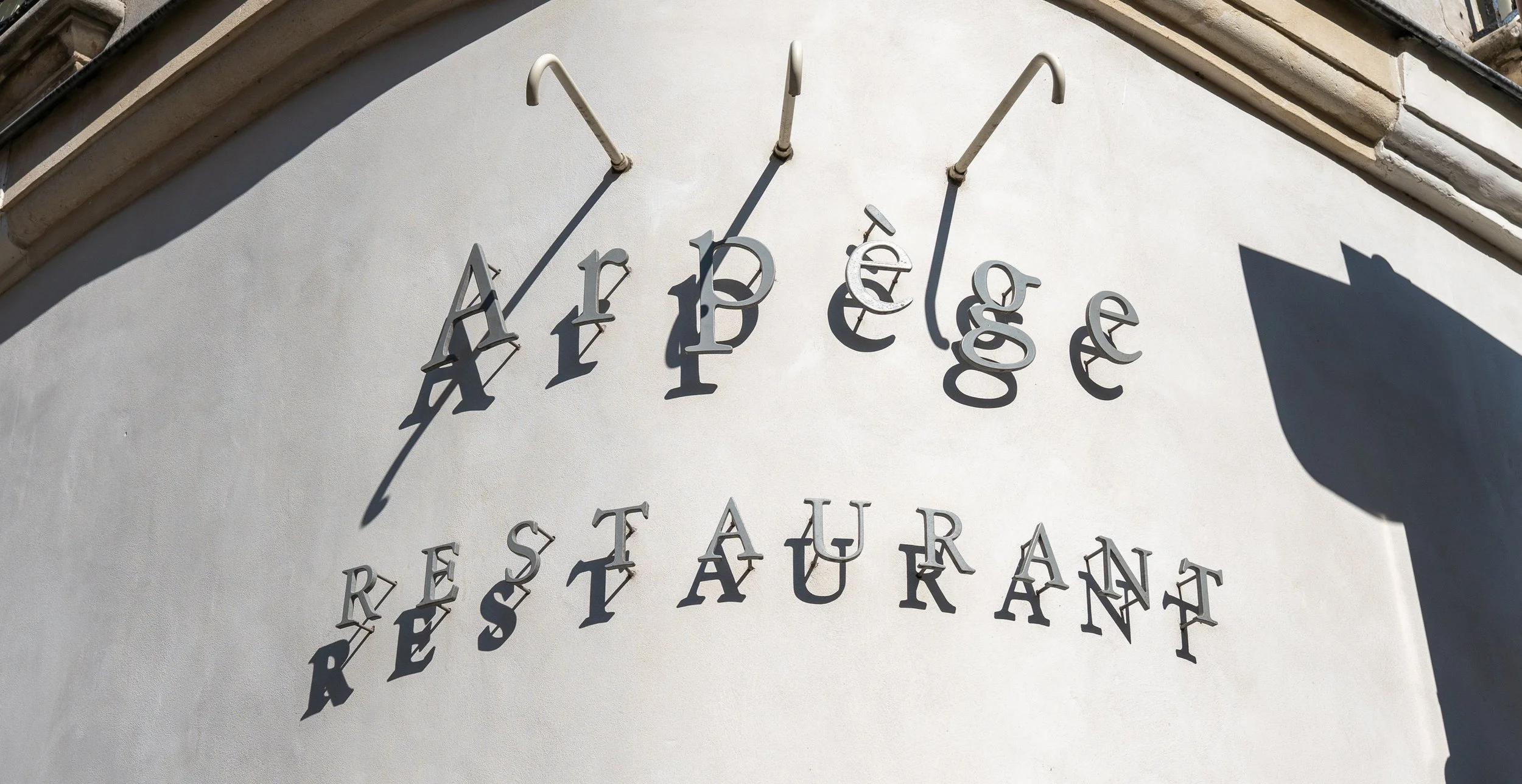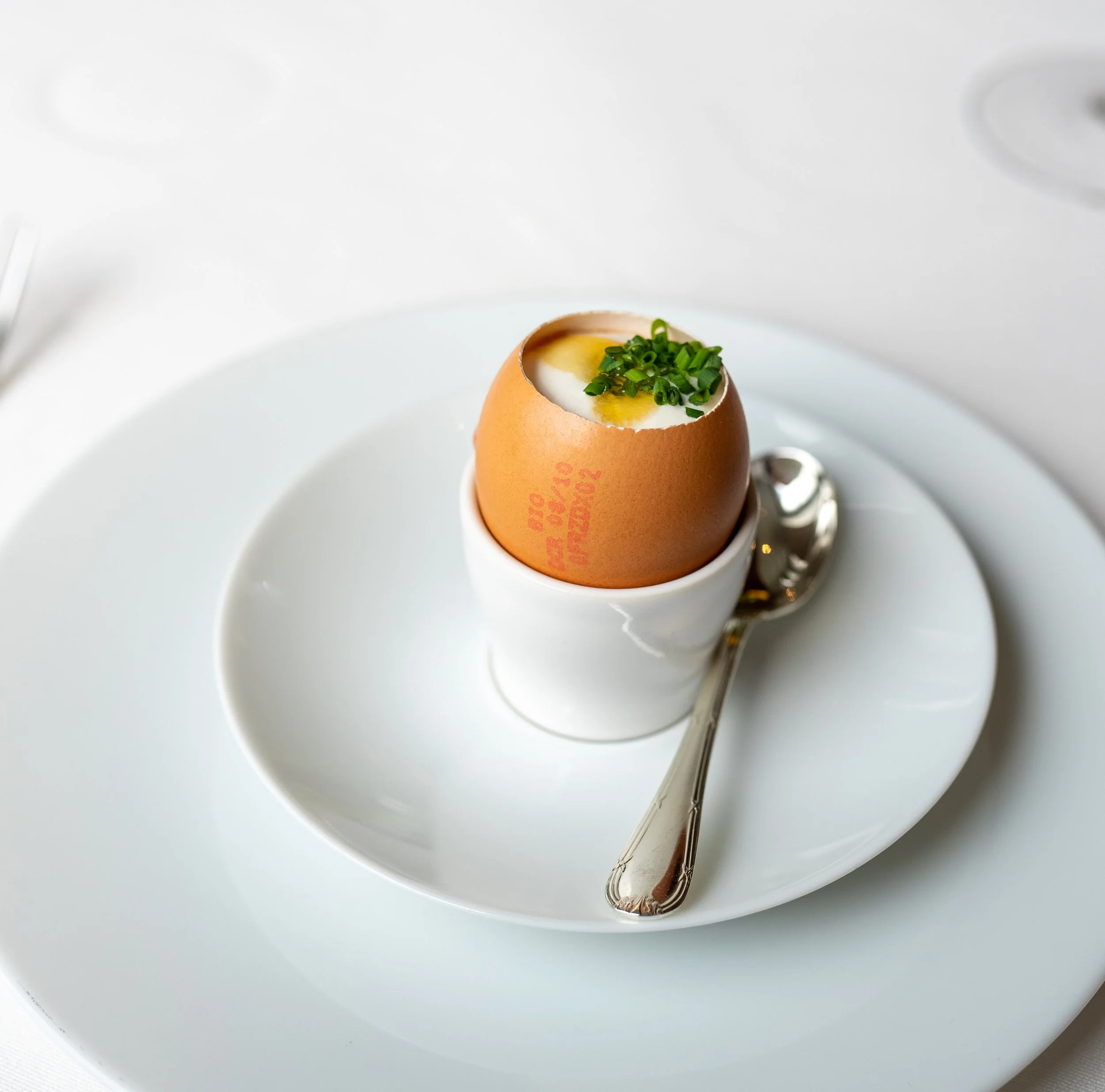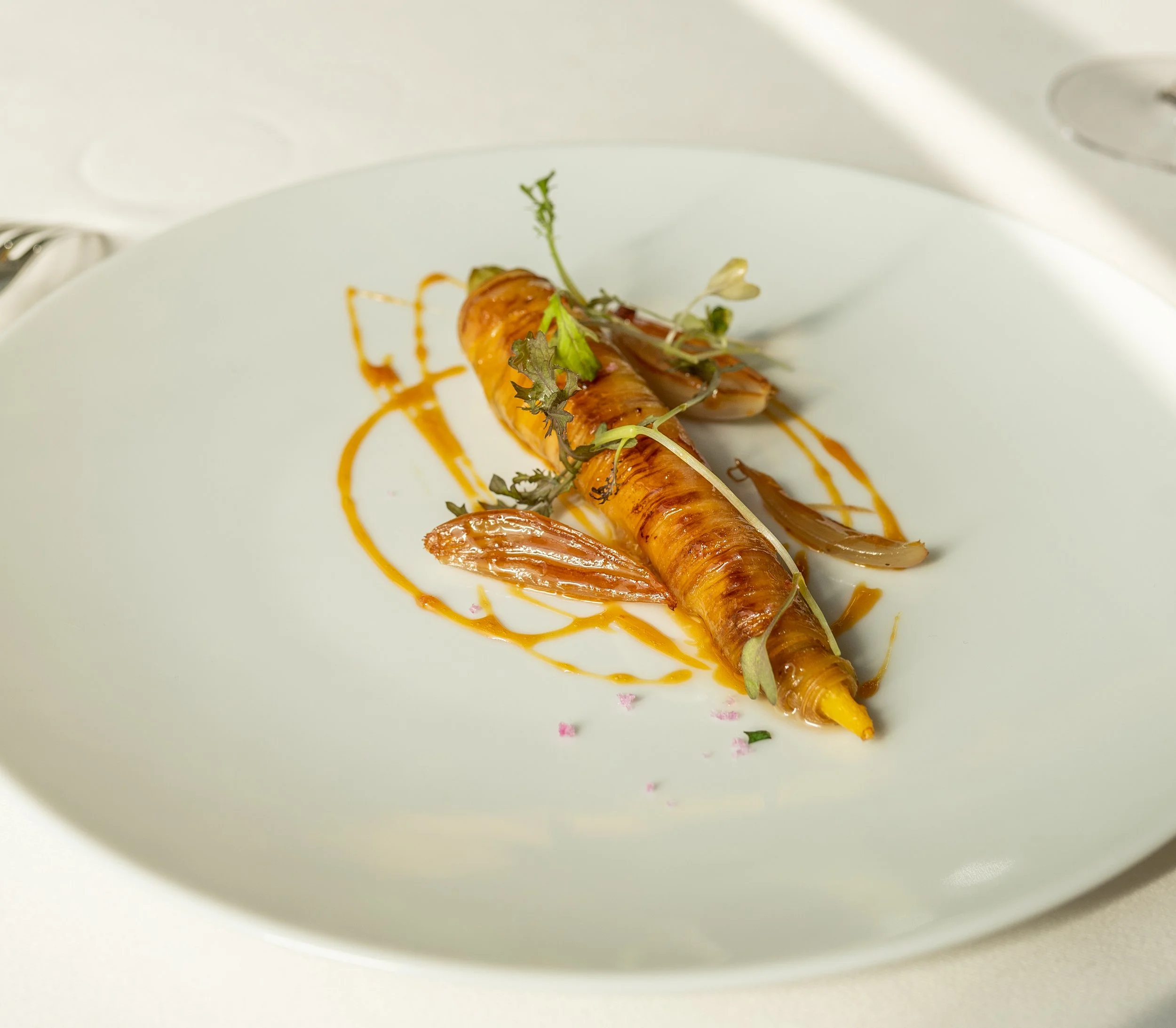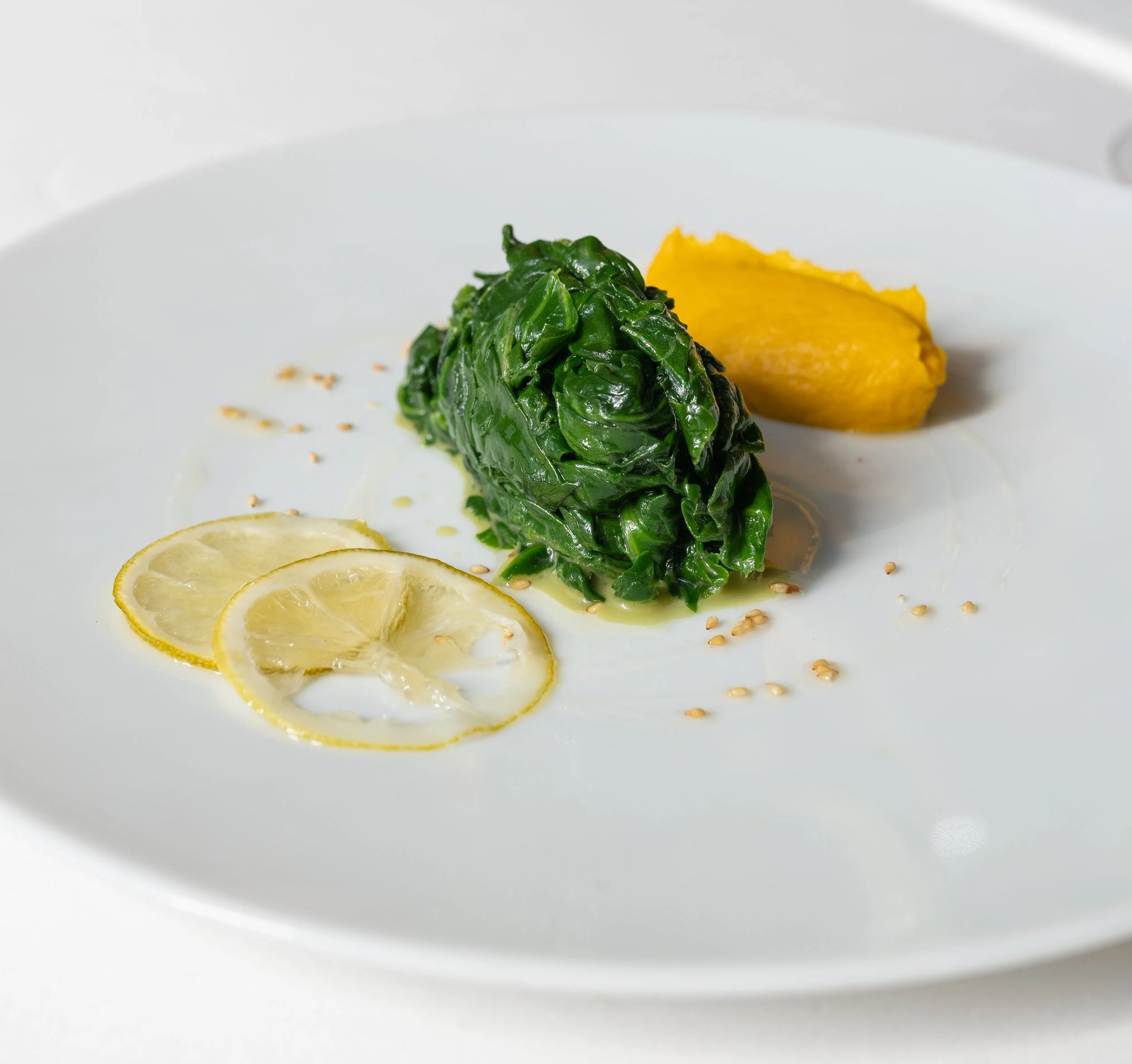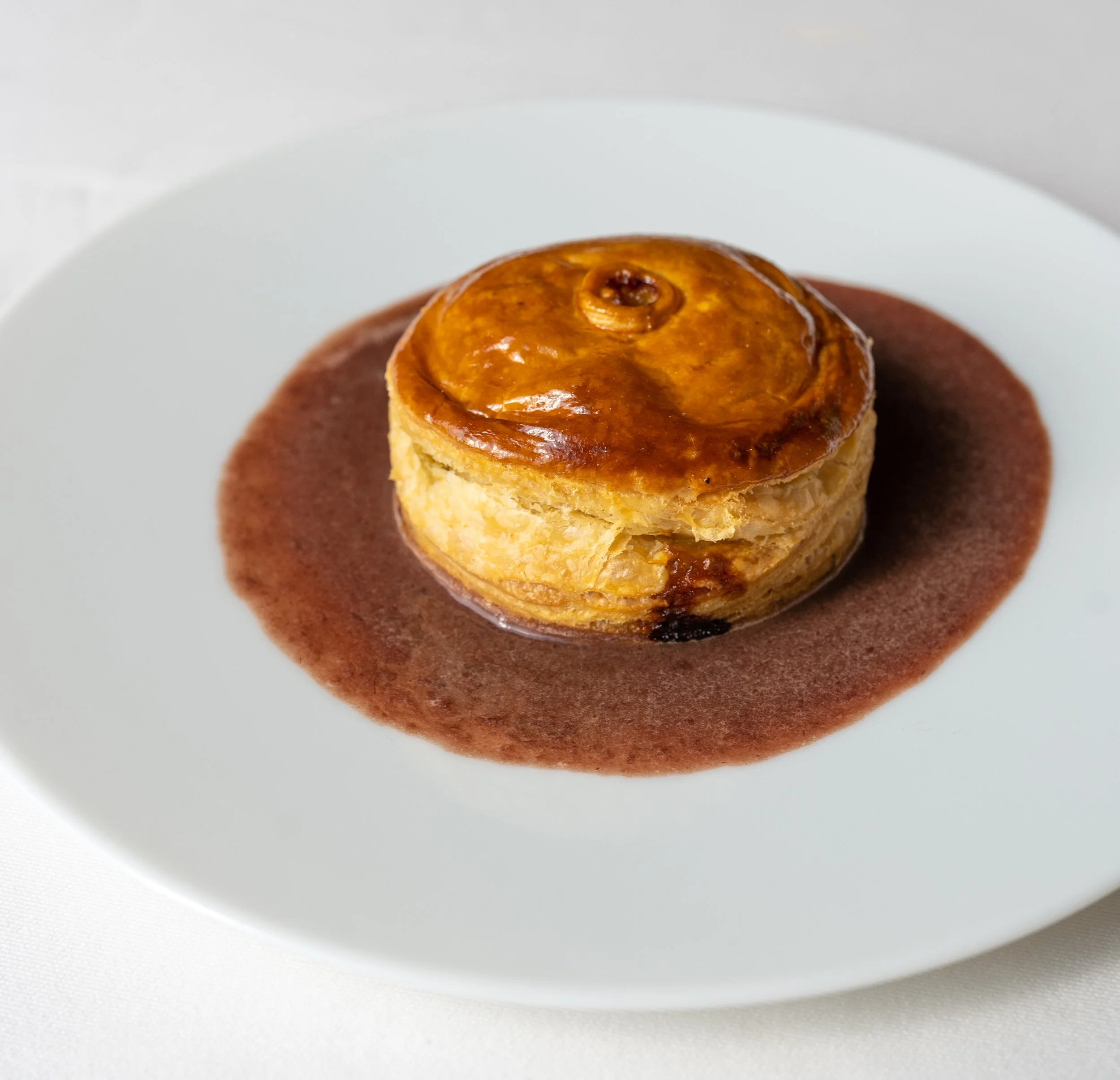Arpège
Arpège Review at a Glance
Awards: 3 Michelin Stars
Rating: 97/100
Verdict: There may not be a more divisive three-star restaurant in France than Arpège. Most Michelin restaurants stamp out any unpredictability, striving to find precision and perfection in the predictable (see The Table for the best example of this). That is not the case at Arpège where Chef Alain Passard and his kitchen team fly by the seat of their pants, sending out a stream of dishes seemingly at random while taking advantage of whatever is a season. This approach means depending on the day, you get a very different experience. The focus on fresh produce delivered daily from Passard’s garden means certain ingredients repeat themselves throughout the meal. If that ingredient is tomato, you are thrilled. If that ingredient is onion or potato, you might have a different feeling.
This Russian roulette style of fine dining means my experience will not be yours. There are plenty of people who did not like Arpège (just look at this scathing click baiting review by eater). That said, I was enthralled by the meal. Food was actually cooked a la minute rather than in water baths. The staff listened to your input and incorporated requests into the dishes sent out. The kitchen even went off the menu, preparing raw langoustine and caviar which was my favorite dish of 2021. Did Arpège change how I thought about vegetables? No, but it is the best restaurant I have visited in Paris.
Price I Paid: €310 (€175 lunch menu and €135 for half portion of langoustines)
Would I revisit: Yes
Date Visited: June 2021
Value: 15/20 for the lunch menu, 10/20 for regular tasting
Arpège & Alain Passard Background
If you are reading this, you probably already know quite a bit of background on Arpège and Alain Passard. You may have even watched the chef’s table which went through how Chef Passard was a master rotisserie and then one day decided to forgo fish and meat and focus on vegetables. These vegetables, grown on a farm north of Paris and delivered to the restaurant daily, have almost developed mythology themselves. If the press is to be believed, eating these vegetables is supposed to be a near-religious experience that converts even the staunchest carnivore to the wonders of the garden’s bounty and happily fork over fistfuls of euros for nothing more than tomatoes and carrots.
The aforementioned fistful of euros is where people struggle the most with Arpège. Paris is expensive and visiting Chef Passard is no different despite the lack of traditional luxury ingredients. Lunch was €175 while the land and sea tasting menu is now an eye watering €535. The cheapest protein based a la carte dish costs €175 by itself. While high, the reasonableness of these prices has to be seen within the context of Paris fine dining which has seen astronomical inflation over the last few years. For comparison, I visited Le Cinq in January 2020 and the tasting menu then cost €360. The same menu now costs €580.
If you wish to visit as a solo guest Arpège reserves a solitary table for parties of one so book early. This table also happens to be tucked into the corner by the kitchen so there is a lot of foot traffic from the FOH. I have heard plenty of people complain about this table, saying the noise from the kitchen was distracting and runners were frequently visiting the nearby service station. I personally liked the space and enjoyed the natural light coming through the window. No matter where you are sitting, Arpège’s dining room is much less grand than its three star peers in Paris.
What I ate at Arpège
The meal started with Passard’s classic tomato gazpacho with a lovage cream. The gazpacho had tremendous flavor with the lovage and a bit of oil adding fattiness. Perhaps because of how I mixed in the cream, I did find some bites to be better than others. At the same time the gazpacho was brought out, the server dropped off a plate of raw vegetables including variations of tomatoes, radishes and carrots. Served simply with a bit of salt, I could see how a course like this could elicit skepticism - I paid hundreds of Euros for them to serve raw produce? While I can understand this view, I thought it was a smart idea as it let you try the vegetables that would be used throughout the meal in their natural form.
Next was another classic of Passard (which I specifically requested be included on the tasting menu), the hot and cold egg that was invented some 20 years ago. The name comes from a warm egg yolk being served with cold cream as well as maple syrup, four-spice, sherry vinegar and chives. This was a simple and subtle dish, a study in the effective use of contrasting textures and temperatures to create flavor sensations. The warmth of the yolk plays well with the cold cream. You detect a bit of sweetness from the syrup. Then just a hint of sharpness from the vinegar. Even the chives added a savory component. This seems so simple but the egg needs to be assembled just right to get the desired combination. A pleasure to eat although I felt the maple and vinegar flavors could have been amped up a notch.
One of the common ways Passard shows off his vegetables is by slicing them thinly in the form of a carpaccio, in this case with turnip which was paired with truffle and cheese. While I was surprised by how good a turnip could be (it is 94% water after all), this was mostly about the umami from the truffle and spot-on seasoning which lifted everything up without being overly dressed.
While all the prior dishes were raw, the kitchen sent out a deeply roasted carrot that had been wrapped in rhubarb and was served with shallot and tomato caramel. The carrot popped with natural flavor with the roasting intensifying those flavors and the rhubarb’s tartness providing some nice contrast. This was the first of two times the kitchen paired rhubarb with carrott and they were both very effective.
After the detour to cooked food, we have two more classic vegetable preparations from Passard. First, you have “Trilogie de ravioles potageres au consomme printanier, saveurs ephemeres” which apparently is French for vegetable raviolis in a vegetable consommé. While the ravioli were good, the real highlight of the dish was the seasonal consommé based on tomatoes. The tomato flavor was deeply intense, like digging into a bowl of marinara sauce. It was remarkable just how much tomato flavor the kitchen was able to coax into the clear consommé.
Continuing on we had Passard’s vegetable “sushi” which on my visit featured tomato draped over sushi rice with black olive tapenade. This was fine but I am not sure sushi is the best vehicle for serving a tomato.
While the meal had been exciting to this point, the next dish of langoustine carpaccio with cream and caviar was a literal head turner with guests craning their necks to see what just came out of the kitchen. I couldn't really blame them - it wasn’t on the printed menu or any of the specials which included grilled, but not raw, langoustines. I only bothered trying to order it based on LondonEaters guidance that if you want something at L’Arpege you need just ask and they might be able to make it happen. Sublimely sweet langoustines pounded thin, topped with delicate caviar, and laced with cream to add some fattiness. For good measure, some of the garden’s world-class leafy greens were sprinkled on top. I paid dearly for this dish - it was an eye-watering €135 for a half a la carte portion which is almost equal to the price of the gardener’s lunch (€175 at the time of my visit). I am glad I did. This was the best thing I ate in 2021 and the exact type of transcendent dish that makes the costly pursuit of visiting starred restaurants worth it.
A more substantial course featured various roasted vegetables with semolina. Perhaps this was a tad simple but the cooking was accurate (just look at the sear on the zucchini in the foreground of the picture) and it is hard to argue with the warm, comforting flavors of the dish and its top-class vegetables. The kitchen followed up the warm semolina with another vegetable carpaccio, this time with celery, summer truffle and hazelnuts. The sequencing of the menu was undoubtedly bizarre (why did we keep alternating between hot and cold dish?) but did not take away from my appreciation of the dish with the hazelnuts, in particular, being delicious. That said, I preferred the turnip carpaccio to this version.
The most unassuming dish of the night was spinach, lemon, carrot and rhubarb. My notes for this dish actually said “looks like crap, tastes amazing” and that is all you really need to know. The lemon perfectly counterbalanced the earthy spinach while rhubarb was an inspired choice to go with the carrot puree as the tartness teased out the natural sweetness of the carrot. If there was any one dish that most aligned with the expectation I had about what Passard could do with vegetables, it was this course which completely challenged what I thought could be accomplished with something as humble as spinach.
The main course of the gardener's lunch was a pithivier of root vegetables with a sauce made of cabernet franc wine. It can be a challenge to make a vegetarian meal feel like it has a main course so it was a smart choice of the kitchen to make a hardy pithivier and pair it with a red wine sauce that you typically associate with a nice meat dish. The key to this course was the quality of the pastry, oozing with butter and having a light flakey texture. This was a textbook example of what a pithivier should be. While the interior filling was moist, the flavors themselves could have popped a bit more as the various root vegetables mostly melded together. Lifting things up though was the cab franc sauce which was fruity and added a burst of flavor to round out the dish.
The first dessert was strawberries with a mint infusion and baby cucumbers. While the concept of this dish was good, I found the mint infusion a tad too strong and the strawberries (Charlotte variety) not quite as inspiring as you need when essentially just serving a bowl of strawberries. Still, this did provide a nice transition to the pastry portion of the meal which started off with profiteroles with hay ice cream and honey. Profiteroles may seem overly simple for a three Michelin star restaurant but if you ignore your preconception about Michelin desserts and focus on just taste, this was great. Fantastic technique all around with the choux pastry perfect and the hay ice cream pairing beautifully with the honey and bit of crushed nuts. This was unabashedly simple but one which was a joy to eat.
The last substantial dessert was mille-feuille with a similar flavor profile as the profiteroles. This was a dish solely focused on being a pleasure to eat, unconcerned with culinary fads. This was a simple dish done perfectly and one of the purest forms of puff pastry a kitchen can produce.
For such an extensive meal, petit fours were limited to two small bites. While one of these was a rather boring macaroon, the other was a mini version of Chef Passard’s take on the apple tart where he shapes thin slices of apple as roses. This was a fun way to get to try the signature of the chef without dedicating an entire course to it.
